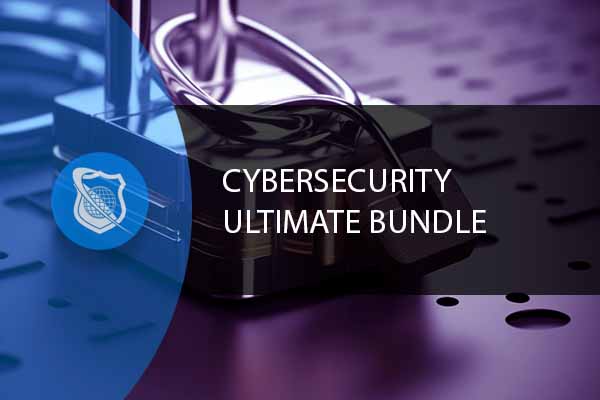In the realm of cybersecurity, comprehending the stages of a cyber attack lifecycle is vital for robust defense mechanisms. This blog dives deep into each stage of the cyber attack lifecycle, with expanded details and real-world examples. We’ll also discuss strategies for preventing or disrupting these attacks.
1. Reconnaissance
What Happens:
Reconnaissance is the initial information-gathering phase. Attackers scout for vulnerabilities in their target’s systems, network infrastructures, or employee behaviors. This stage can be broken down into several key activities:
- Public Data Harvesting: Attackers gather publicly available information from company websites, social media, and other online resources.
- Network Scanning: They may use various tools to scan the target’s network for open ports and services.
- Social Engineering: Gathering information through human interaction, like phishing emails or phone calls, to collect data on internal processes or gain access credentials.
During this stage, attackers are meticulous and patient, often spending weeks or months mapping out their approach.
Real-World Example:
In the 2013 Target Corporation breach, attackers spent considerable time understanding the third-party vendor systems used by Target. They meticulously gathered details about the HVAC system provider, eventually finding a weak link that allowed them access to Target’s network.
2. Weaponization
What Happens:
In the weaponization stage, attackers create or adapt a malicious payload, tailored to exploit known vulnerabilities. This process often involves:
- Customizing Malware: Tailoring malware to bypass security measures or to target specific vulnerabilities within the victim’s infrastructure.
- Bundling Exploits: Combining exploits with malicious software to create a delivery package that can autonomously execute upon reaching its target.
- Testing Against Security Measures: Often, attackers test their creations against common antivirus and security software to ensure they can evade detection.
This stage is critical, as the effectiveness of the attack largely depends on the quality and stealth of the weaponized payload.
Real-World Example:
Stuxnet, discovered in 2010, was a sophisticated weaponized malware. It specifically targeted Siemens industrial control systems used in Iran’s nuclear program, exploiting four zero-day vulnerabilities. It was meticulously crafted to disrupt uranium enrichment by subtly altering the speed of centrifuges.

Cybersecurity Training Series – 15 Courses
Embark on a Thriving Cybersecurity Career! With our Ultimate Cyber Security training courses, you’ll dive into the world of ethical hacking, penetration testing, and network security. Our 15 comprehensive courses, led by industry experts, will equip you with essential Cybersecurity skills, setting you on the path to success in this ever-evolving field.
3. Delivery
What Happens:
The delivery phase is where the weaponized payload is transmitted to the target. This can be done through various methods:
- Phishing Emails: Sending emails that appear legitimate but contain malicious attachments or links.
- Drive-by Downloads: Compromising legitimate websites to automatically download malware when a user visits the site.
- Direct Network Exploitation: Using network vulnerabilities to directly inject malware into the target’s system.
The delivery method chosen usually depends on the target’s profile and the type of vulnerability being exploited.
Real-World Example:
In the WannaCry ransomware attack of 2017, the delivery was executed through a phishing campaign. Emails contained links that, once clicked, initiated the download and installation of the ransomware. This attack took advantage of vulnerabilities in outdated Windows operating systems.
4. Exploitation
What Happens:
Exploitation is the phase where the actual attack occurs. The malicious payload, delivered in the previous stage, activates and exploits vulnerabilities in the target’s system. Key aspects of this phase include:
- Executing Code: The malware executes its code to exploit a specific vulnerability. This could range from buffer overflows to SQL injection, depending on the nature of the vulnerability.
- Elevating Privileges: Often, the initial exploit is used to gain higher-level access. This could involve escalating from a standard user to an administrative level, allowing broader access to the system.
- Creating Backdoors: In many cases, the exploit will create a backdoor, ensuring continued access for the attacker even if the initial vulnerability is patched.
The goal of this stage is to establish a foothold in the target’s system, setting the stage for further malicious activities.
Real-World Example:
The Equifax data breach in 2017 is an example of this stage. Attackers exploited a vulnerability in the Apache Struts web application framework used by Equifax. This allowed them to gain unauthorized access and eventually led to the compromise of personal data of millions of individuals.
5. Installation
What Happens:
Once the attacker has successfully exploited a vulnerability, the next step is to ensure persistent access to the target system. This stage involves:
- Installing Malware: The attacker installs malware, such as Trojans or rootkits, to maintain control over the system.
- Establishing Command and Control Channels: These channels allow attackers to communicate and control the compromised systems remotely.
- Evading Detection: The malware often includes mechanisms to avoid detection by security software, such as changing its signatures or hiding within legitimate processes.
The installation phase is critical for maintaining long-term access and control over the compromised system.
Real-World Example:
In the Sony Pictures hack of 2014, attackers not only stole data but also installed malicious software that erased data from Sony’s servers and rendered them inoperable. The malware was designed to establish a foothold in the network, allowing for continued access and control.
6. Command and Control (C2)
What Happens:
The Command and Control stage is where the attacker establishes a remote command channel to control the compromised system. Key activities in this phase include:
- Establishing Communication: The malware communicates back to the attacker’s server, often using encrypted channels to avoid detection.
- Receiving Commands: The compromised system can receive and execute commands sent by the attacker. This could include actions like data exfiltration, spreading to other systems, or further exploitation.
- Maintaining Persistence: Ensuring continued control, often through mechanisms that automatically reestablish connections if disrupted.
This stage is crucial for attackers to direct their next actions based on the initial success and the data gathered from the compromised systems.
Real-World Example:
The Dridex banking malware, widely spread through phishing campaigns, is known for establishing robust C2 channels. Once installed, it allowed attackers to steal banking credentials by issuing commands to compromised systems.

Ethical Hacker Career Path
If you’re looking to truly realize the full potenital of using Microsoft Power BI, ITU offers an excellent course designed to teach you all about using this exceptional reporting too.
7. Actions on Objectives
What Happens:
The final stage of the cyber attack lifecycle is where the attacker achieves their primary goal. This could be:
- Data Exfiltration: Stealing sensitive data like personal information, intellectual property, or financial records.
- Destruction: Damaging systems or data, as seen in wiper malware attacks.
- Disruption: Disabling critical services or infrastructure, which could be part of a broader campaign like a state-sponsored attack.
- Espionage: Gathering intelligence for political, military, or economic advantage.
The specific objective depends on the attacker’s intent, which could range from financial gain to geopolitical influence.
Real-World Example:
The infamous NotPetya attack in 2017 initially appeared to be ransomware but turned out to be a destructive attack aimed at Ukrainian infrastructure. It quickly spread worldwide, causing significant disruption and financial losses.
Breaking the Cyber Attack Chain
To defend against these stages, organizations must adopt a multi-layered security approach. This includes:
1. Enhanced Reconnaissance Detection
Detecting a cyber attack in its early stages is crucial. Enhanced reconnaissance detection involves:
- Threat Intelligence: Using global and industry-specific intelligence to identify potential threats.
- Network Monitoring: Continuously monitoring network traffic for suspicious patterns.
- Employee Training: Educating employees to recognize and report phishing attempts and social engineering tactics.
- Dark Web Monitoring: Keeping an eye on dark web forums and marketplaces for any mention of your organization or signs of planned attacks.
2. Robust Defense Against Weaponization and Delivery
To defend against the delivery of weaponized payloads, organizations should:
- Antivirus Software: Utilize updated antivirus solutions to detect and remove known threats.
- Email Filtering: Implement advanced email filtering to catch phishing and malicious attachments.
- Intrusion Detection Systems (IDS): Deploy IDS to monitor network and system activities for malicious activities or policy violations.
- Web Filters: Use web filters to prevent access to malicious websites.

Information Security Manager Career Path
Propel your career forward and be part of an essential member of any management team as an Information Security Manager. This advanced training series is designed specifically for those want to move up into a management position in the IT field.
3. Strengthening Systems Against Exploitation
Reducing system vulnerabilities is key to preventing exploitation:
- Regular Patching: Ensure timely application of security patches to all systems and software.
- Vulnerability Assessments: Conduct regular assessments to identify and mitigate vulnerabilities.
- Segmentation of Networks: Segment networks to contain potential breaches and reduce lateral movement.
- Security Configuration: Maintain proper security configurations of systems and applications.
4. Monitoring for Installation Activities
Detecting and responding to the installation of malicious software involves:
- Endpoint Detection and Response (EDR): Use EDR tools for real-time monitoring and response to threats on endpoints.
- Behavioral Analysis: Employ systems that analyze behavior to detect anomalies indicative of malicious installations.
- Log Analysis: Regularly review system and application logs for signs of unusual activities.
- File Integrity Monitoring: Monitor critical files for unauthorized changes.
5. Disrupting Command and Control Communications
Breaking the communication between attackers and compromised systems is crucial:
- Network Traffic Analysis: Analyze outgoing network traffic to identify potential C2 communications.
- Firewall Policies: Implement and regularly update firewall rules to block unauthorized outbound communications.
- DNS Filtering: Use DNS filtering to block traffic to known malicious domains.
- Anomaly Detection: Employ systems that detect and alert on unusual network traffic patterns.
6. Preventing Actions on Objectives
The final line of defense is to prevent attackers from achieving their goals:
- Data Loss Prevention (DLP): Implement DLP tools to monitor and control data transfer.
- Regular Backups: Maintain regular, secure backups of critical data to mitigate the impact of data destruction or ransomware.
- Incident Response Planning: Develop and regularly update incident response plans for quick action in case of data breaches.
- Access Controls: Enforce strict access controls and least privilege principles to minimize data exposure.
Implementing these strategies requires a combination of technology, processes, and people. By adopting a proactive and layered approach to security, organizations can significantly enhance their defenses against the evolving landscape of cyber threats.
Frequently Asked Questions About a Cyber Attack Lifecycle
What is the cyber attack lifecycle?
The cyber attack lifecycle, also known as the “cyber kill chain,” is a model that describes the stages a cyber attacker goes through to successfully compromise a network or system. It typically includes stages like reconnaissance, weaponization, delivery, exploitation, installation, command and control, and actions on objectives.
Why is understanding the cyber attack lifecycle important?
Understanding the lifecycle helps organizations identify potential threats at each stage, implement effective security measures, and develop strategies to detect, prevent, and respond to cyber attacks. It allows for a more proactive approach to cybersecurity.
Can a cyber attack be stopped at any stage of the lifecycle?
Yes, a cyber attack can potentially be stopped at any stage of the lifecycle. Early stages like reconnaissance and weaponization are more challenging to detect, but strategies like enhanced threat intelligence and monitoring can be effective. Later stages like delivery and exploitation can be countered with robust defense measures like antivirus software and regular system patching.
What are some common methods used in the reconnaissance stage of a cyber attack?
Common methods include public data harvesting, network scanning, and social engineering tactics like phishing. Attackers gather information about the target’s systems, employees, and network defenses to plan their attack.
How can organizations prepare for or prevent cyber attacks?
Organizations can prepare for cyber attacks by implementing a layered security approach, including regular system updates and patching, employee training, robust security policies, advanced threat detection systems, and regular security audits. Preparing an incident response plan and conducting regular security awareness training are also crucial.
























